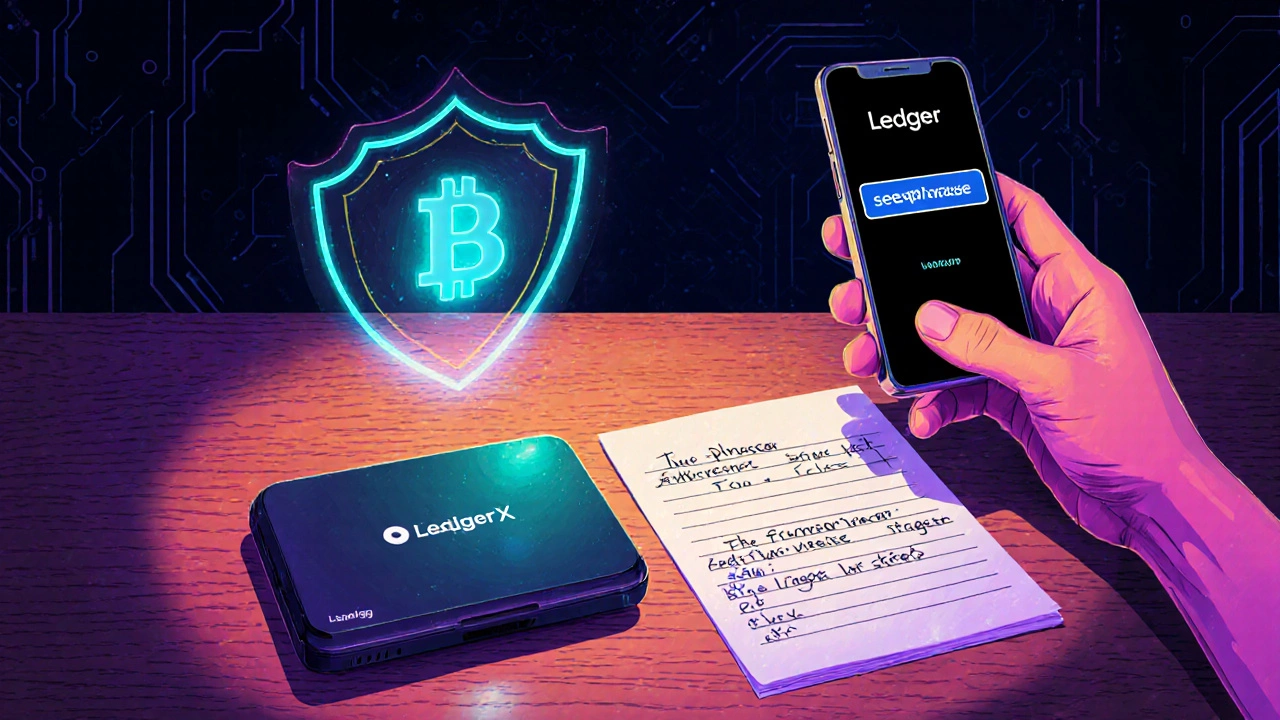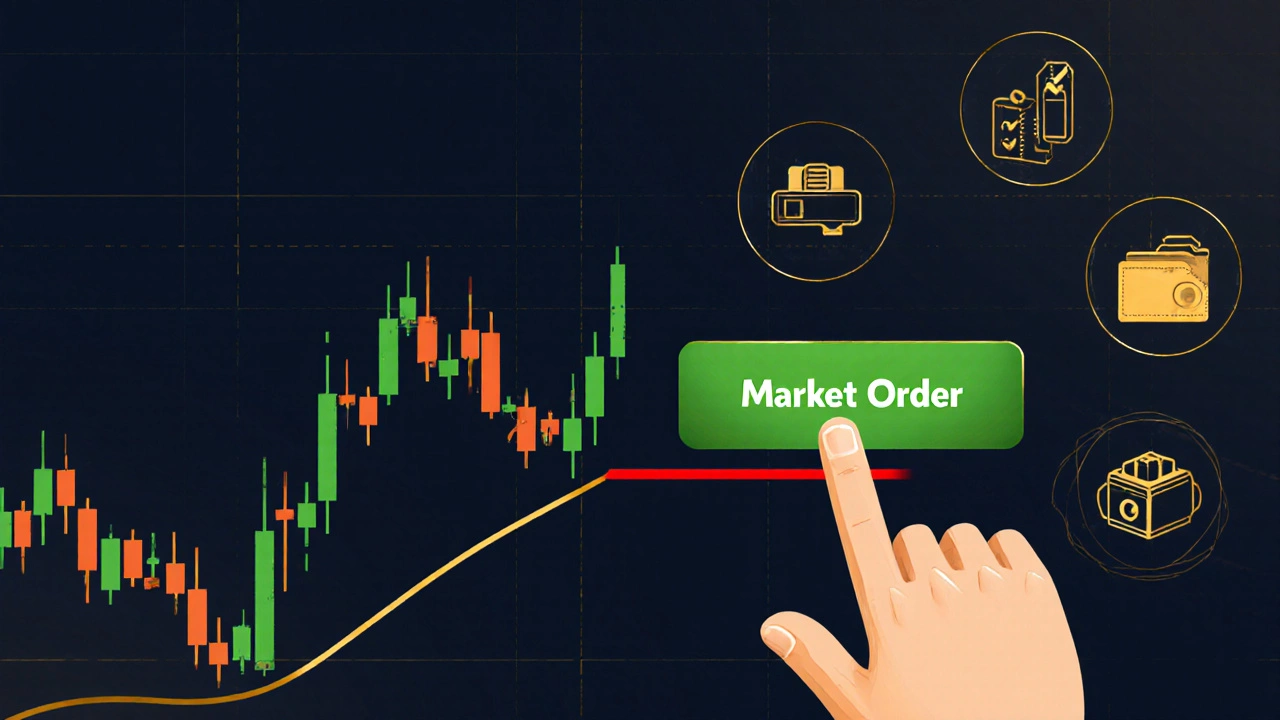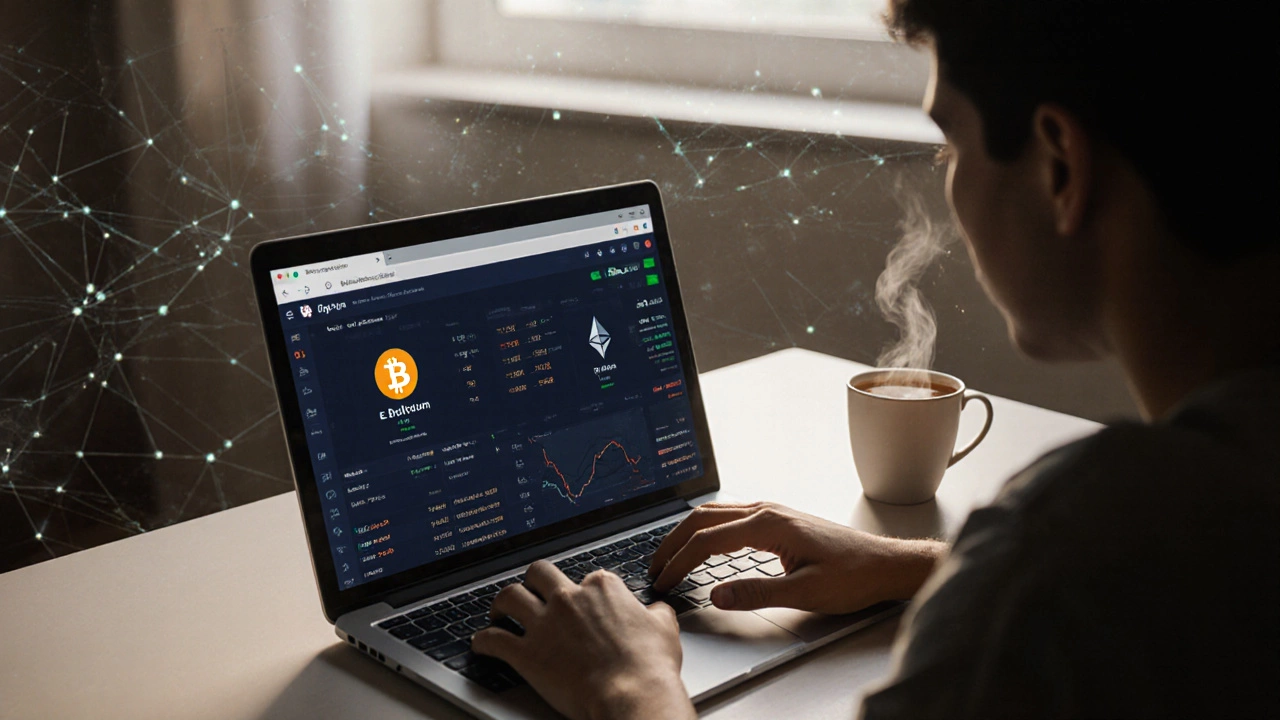Risk Management Calculator
The 1% Rule
Never risk more than 1% of your total capital on a single trade. This simple strategy protects your portfolio from significant losses.
Your Risk Management Summary
Key Takeaways
- Choose a reputable exchange, set up a secure wallet, and verify your identity before you trade.
- Start with a small amount, stick to simple market and limit orders, and always use stop‑loss protection.
- Learn basic technical and fundamental analysis - you don’t need a PhD, just a few core concepts.
- Keep records for tax purposes; Australia’s ATO treats crypto as property.
- Use the step‑by‑step checklist at the end to launch your first trade confidently.
Ready to dip your toes into the world of digital money? crypto trading can feel like stepping onto a moving train, but with the right basics you’ll be in control from day one. Below is a plain‑English walkthrough that covers everything a complete newcomer needs - from picking an exchange to executing that first buy.
Cryptocurrency Trading is the act of buying and selling digital assets such as Bitcoin and Ethereum on online platforms.1. What Exactly Is Cryptocurrency Trading?
In simple terms, it’s exchanging one type of money for another, but the money lives on a blockchain. Unlike traditional stocks, crypto markets run 24/7, and price swings can be dramatic. That’s why new traders need a clear plan before they start clicking “Buy”.
Two core ideas power the space:
- Decentralization: No single bank controls the network.
- Transparency: Every transaction is recorded on a public ledger.
These traits make crypto both exciting and risky - you’ll reap big rewards if you understand the mechanics.
2. Picking the Right Crypto Exchange
Think of an exchange as the storefront where you trade. The best ones combine low fees, strong security, and a friendly UI for beginners.
Crypto Exchange acts as the platform that matches buyers and sellers of digital assets, handling order execution, custody, and often KYC verification.Here’s a quick look at three popular choices as of October 2025:
| Exchange | Lowest Fee | Supported Coins | Mobile App Rating | Best For |
|---|---|---|---|---|
| Binance | 0.10% per trade | 500+ (incl. Bitcoin, Ethereum, stablecoins) | 4.8/5 | Broad selection, low fees |
| Coinbase | 0.50% (higher on small trades) | 200+ (focus on major assets) | 4.6/5 | Ease of use, regulatory confidence |
| Kraken | 0.16% (tiered) | 300+ (good for futures) | 4.5/5 | Advanced tools without complexity |
All three require KYC (Know Your Customer) verification - you’ll need a photo ID and sometimes a proof of address. Don’t let that scare you; it’s standard practice to protect against fraud.
3. Setting Up a Secure Wallet
Exchanges keep your coins in hot wallets, which are convenient but vulnerable. A dedicated wallet gives you full control.
Wallet is a software or hardware tool that stores private keys, allowing you to send and receive cryptocurrency securely.Two easy options for beginners:
- Software wallet - apps like Trust Wallet or MetaMask. Free, but keep your device locked.
- Hardware wallet - devices like Ledger Nano X. A small upfront cost, but the gold standard for security.
When you first withdraw from an exchange, send the funds to a wallet address you control. Write down the recovery seed (12‑24 words) on paper and store it safely - it’s the only way to recover funds if the device is lost.

4. Order Types You Need to Know
Most new traders start with market and limit orders. Here’s the difference:
- Market Order: Executes immediately at the best available price. Great for speed, risky during spikes.
- Limit Order: Sets a price you’re willing to pay (or receive). The trade only executes if the market reaches that level.
Advanced traders add stop‑loss and take‑profit orders to automate risk management.
Stop‑Loss is a pre‑set order that sells a position once the price falls to a predetermined level, limiting potential loss.Example: You buy 0.05 BTC at $26,800. Setting a stop‑loss at $25,500 means the system will sell automatically if price dips below that, protecting your capital.
5. Managing Risk - The 1% Rule
Never risk more than 1% of your total capital on a single trade. If you have $2,000 to invest, the most you’d expose on any position is $20. This simple math keeps you in the game even when luck isn’t on your side.
Combine the 1% rule with these habits:
- Use stop‑loss orders on every trade.
- Avoid margin (leverage) until you’ve mastered spot trading.
- Keep a trading journal - note entry price, exit price, and why you made the move.
6. Basics of Technical & Fundamental Analysis
You don’t need a PhD in finance; a handful of tools will do.
Technical Analysis involves reading price charts, patterns, and indicators to predict short‑term market movement.Key concepts:
- Support & Resistance: Price levels where the market repeatedly bounces or stalls.
- Moving Averages (MA): Smooth out price data; the 50‑day MA is a popular trend gauge.
- Relative Strength Index (RSI): Shows if an asset is overbought (>70) or oversold (<30).
On the fundamental side, look at:
- Network activity (e.g., Bitcoin’s hash rate).
- Adoption news - big companies announcing crypto payments.
- Regulatory updates - Australia’s recent guidance on crypto tax.
Combining the two gives a clearer picture than relying on hype alone.

7. Step‑by‑Step: Your First Trade
- Sign up on your chosen exchange (e.g., Binance). Complete KYC.
- Enable two‑factor authentication (2FA) - Google Authenticator works well.
- Deposit funds via bank transfer or a credit card. Start with a modest amount like $100.
- Navigate to the “Buy/Sell” tab and select the asset you want - Bitcoin (BTC) is a common entry point.
- Choose a market order if you want instant execution, or a limit order if you have a target price.
- Set a stop‑loss at 2-3% below your entry price; adjust as the trade moves in your favor.
- Once the order fills, withdraw the purchased BTC to your personal wallet for added security.
- Record the trade details in your journal - date, amount, price, reason.
That’s it. Repeat the process, gradually increasing your capital as you gain confidence.
8. Common Pitfalls & How to Avoid Them
- Chasing price spikes: Buying after a massive rally often leads to buying at the top.
- Ignoring fees: Even a 0.1% fee adds up on frequent trades.
- Not securing private keys: Losing your seed phrase means lost funds forever.
- Skipping tax reporting: The ATO requires you to declare crypto capital gains; failure can trigger penalties.
Stay disciplined, keep learning, and treat each trade as a data point, not a gamble.
9. Quick Checklist Before You Trade
- Exchange account verified and 2FA enabled.
- Personal wallet set up, seed phrase stored offline.
- Capital allocated - only trade money you can afford to lose.
- Stop‑loss level defined for the trade.
- Trade journal ready for notes.
- Tax reporting method noted (spreadsheet, software, or accountant).
Run through this list, and you’ll walk into the market with a solid safety net.
Frequently Asked Questions
Do I need a bank account to start crypto trading?
Yes, most exchanges require a linked bank account for fiat deposits and withdrawals. Some platforms let you use credit cards, but fees are higher.
Is it safe to keep crypto on an exchange?
Exchanges employ strong security, but they remain attractive targets. For long‑term storage, move assets to a personal wallet, preferably a hardware device.
What’s the difference between Bitcoin and Ethereum?
Bitcoin was created as digital gold - a store of value. Ethereum adds a programmable layer for smart contracts, enabling decentralized apps.
How much should I trade on my first day?
Start with a small, affordable amount - $50 to $100 is typical. Apply the 1% risk rule and keep the trade simple.
Do I need to pay tax on crypto profits in Australia?
Yes. The ATO treats crypto as property, so capital gains tax applies to profits. Keep accurate records of each transaction.


